Super Flower Leadex Platinum 550W PSU Review
Super Flower responds to the high demand for low-capacity and highly efficient PSUs with the release of its Leadex Platinum with 550 W max power. This unit packs high performance, silent operation and Platinum efficiency.
Why you can trust Tom's Hardware
Transient Response Tests
Advanced Transient Response Tests
For details on our transient response testing, please click here.
In these tests, we monitored the response of the PSU in two different scenarios. First, a transient load (10A at +12V, 5A at 5V, 5A at 3.3V and 0.5A at 5VSB) was applied to the PSU for 200ms while the PSU was working at 20 percent load. In the second scenario, the PSU was hit by the same transient load while operating at 50 percent load. In both tests, we used our oscilloscope to measure the voltage drops caused by the transient load. The voltages should have remained within the ATX specification's regulation limits.
These tests are crucial because they simulate the transient loads a PSU is likely to handle (such as booting a RAID array, an instant 100 percent load of CPU/GPUs, etc.). We call these tests Advanced Transient Response Tests, and they are designed to be very tough to master, especially for a PSU with a capacity of less than 500W.
Advanced Transient Response at 20 Percent
| Voltage | Before | After | Change | Pass/Fail |
|---|---|---|---|---|
| 12V | 12.231V | 12.137V | 0.77% | Pass |
| 5V | 5.040V | 4.935V | 2.08% | Pass |
| 3.3V | 3.293V | 3.175V | 3.58% | Pass |
| 5VSB | 5.069V | 5.016V | 1.05% | Pass |
Advanced Transient Response at 50 Percent
| Voltage | Before | After | Change | Pass/Fail |
|---|---|---|---|---|
| 12V | 12.195V | 12.103V | 0.75% | Pass |
| 5V | 5.023V | 4.915V | 2.15% | Pass |
| 3.3V | 3.279V | 3.171V | 3.29% | Pass |
| 5VSB | 5.028V | 4.981V | 0.93% | Pass |



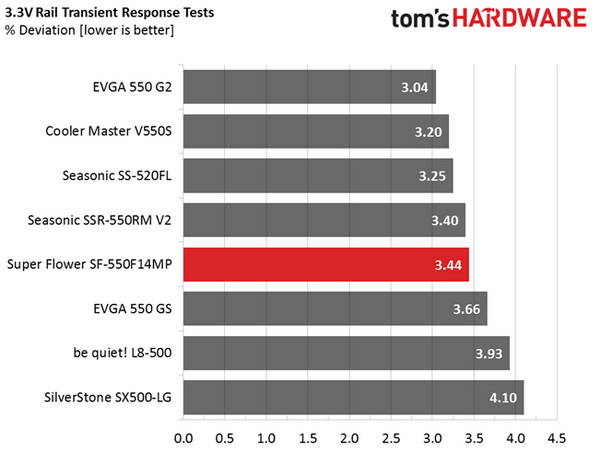

The deviations on the +12V, 5V and 5VSB rails were low enough, especially for a low-capacity PSU. On the 3.3V rail, the deviation was higher than we would like to see and this resulted in a voltage drop of below 3.2 V the moment we applied the transient load. We don't want to see lower than 3.2V readings on this rail in any case, and the Leadex PSU will lose some performance points for this.
Here are the oscilloscope screenshots we took during Advanced Transient Response Testing:
Transient Response At 20 Percent Load

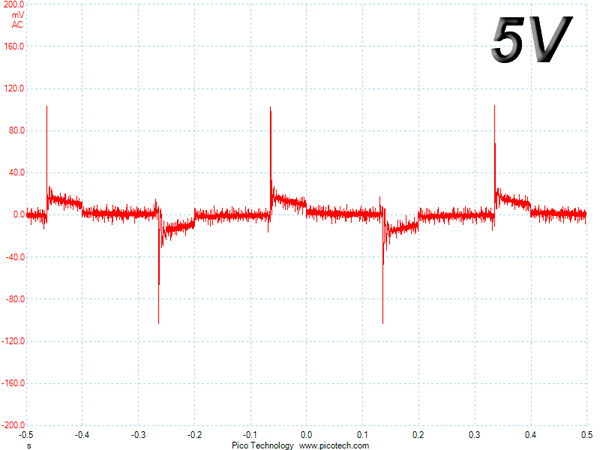
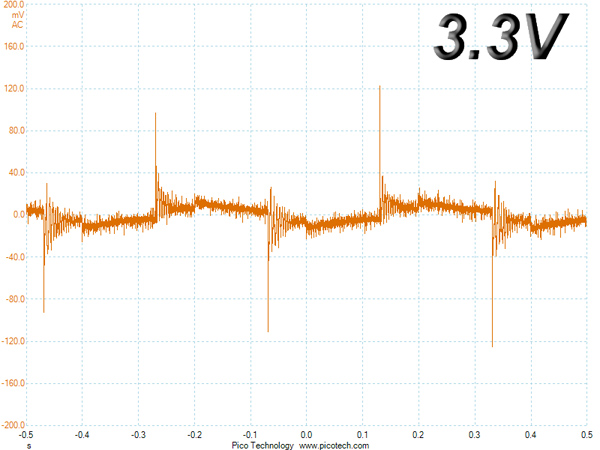

Transient Response At 50 Percent Load

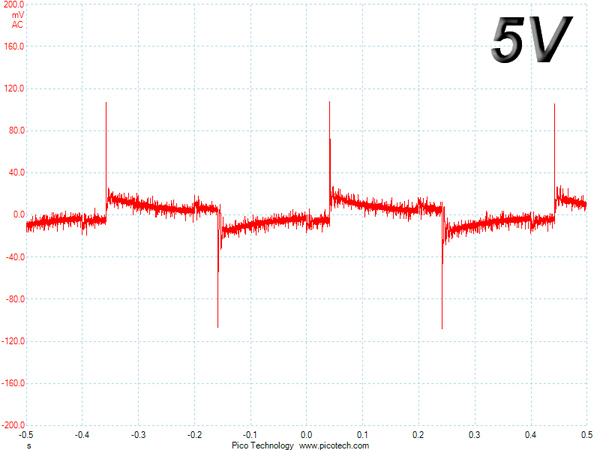


Turn-On Transient Tests
In the next set of tests, we measured the response of the PSU in simpler transient load scenarios — during the PSU's power-on phase.
For the first measurement, we turned off the PSU, dialed in the maximum current the 5VSB could output and switched on the PSU. In the second test, we dialed the maximum load the +12V could handle and started the PSU while it was in standby mode. In the last test, while the PSU was completely switched off (we cut off the power or switched off the PSU from its on/off switch), we dialed the maximum load the +12V rail could handle before switching on the PSU from the loader and restoring the power. The ATX specification states that recorded spikes on all rails should not exceed 10 percent of their nominal values (+10 percent for 12V is 13.2V, and 5.5V for 5V).
Get Tom's Hardware's best news and in-depth reviews, straight to your inbox.


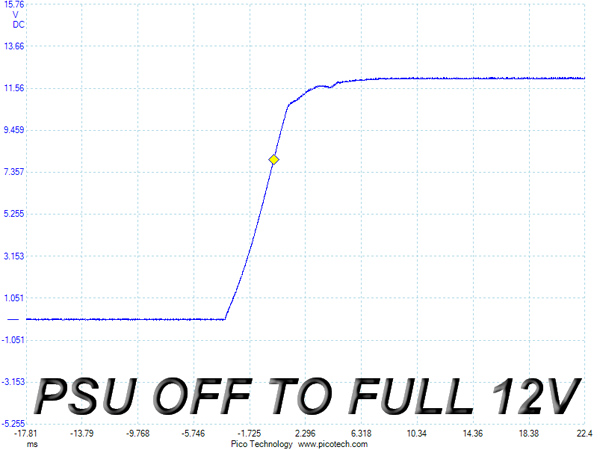
We noticed only a tiny voltage overshoot at 5VSB rail while the performance of the +12V rail was close to perfect in both cases. Overall, these results are very good.
Current page: Transient Response Tests
Prev Page Cross-Load Tests And Infrared Images Next Page Ripple Measurements
Aris Mpitziopoulos is a contributing editor at Tom's Hardware, covering PSUs.
-
laviniuc you mean P2, right?Reply
"This means that we will most likely see an EVGA SuperNOVA 550 T2 unit in the near future." -
envy14tpe The 650W version sells for $85usd (here in Taiwan) and 750W for $100. Not sure why this company doesn't sell more internationally since it is at the top tier. As it is known for quality. Gonna be picking up a SuperFlower PSU with my next build.Reply -
casey_souder Replyactually it did and still says that 10C is 50F.
A change of 1 degree C equals a 1.8 degree F change. Google is doing a temperature conversion, not a unit conversion. -
Roj Number 1 Yes, 10C = 50F, but a 10C increase in temperature is a 18F increase in temp. Two different things.Reply